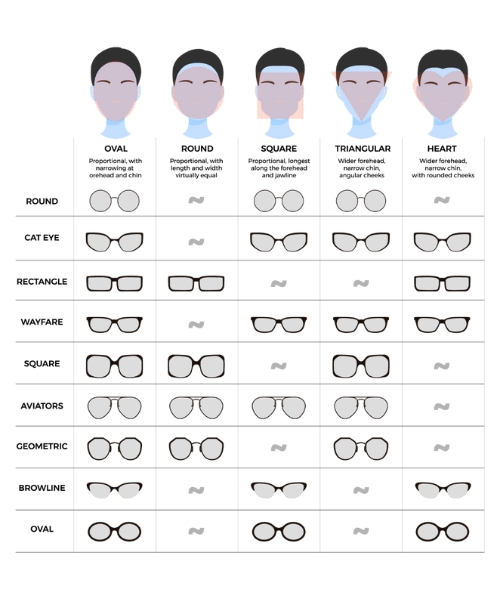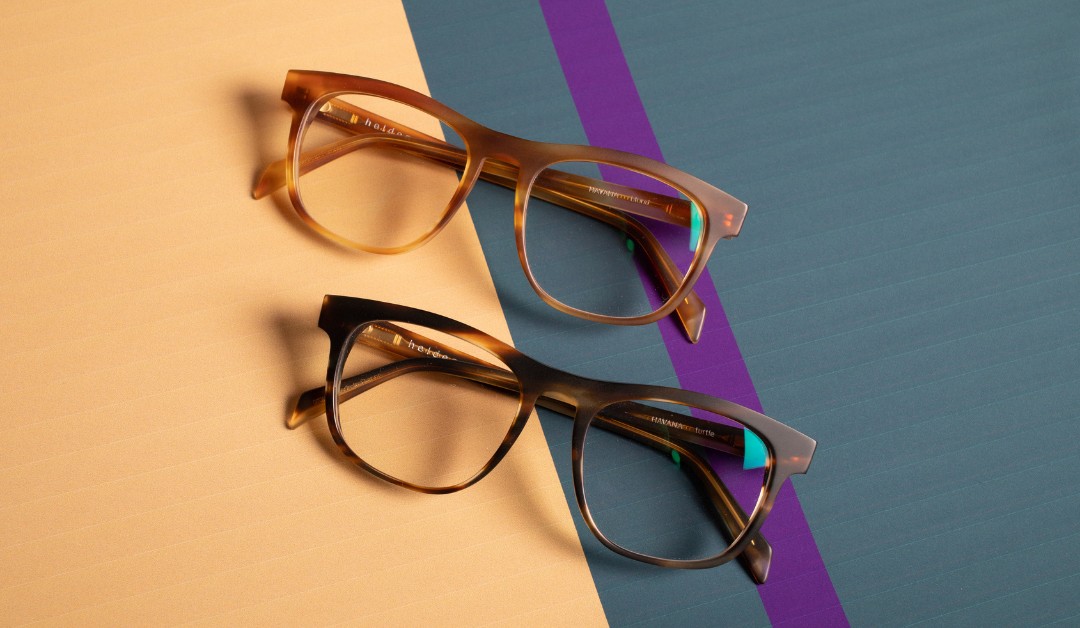Do you feel uncomfortable with your eyewear? Does it feel wonky? Are you feeling wonky when you wear them? If you answered yes to more than one of these questions. If you did, you need to read this article until the end.
We will be covering eyewear size guides and why they’re so important. We will cover all the measurements you need for your eyewear and how you can get them. You will also learn about the different face shapes people have and how you can match your eyewear size.
At the end of our eyewear size guide, you will know what eyeglasses you need to wear to feel comfortable and not wonky.
Why Do I Need Eyewear With The Right Fit?
Too many people believe eyewear size is helpful only for a comfortable fit, but that’s not true. A proper eyewear size guide ensures that your new glasses are comfortable and provide other vital benefits.
Here are some of the benefits along with comfort:
Comfort
First, when your glasses fit right, they’re way more comfortable. Too tight glasses can pinch your nose or press against your temples, giving you a headache. On the flip side, loose glasses can always slide down your nose, which is annoying!
Clear Vision
When your glasses fit properly, they stay in place, helping you see better. If they’re wonky or crooked, it messes with your vision. Plus, if your lenses aren’t aligned with your eyes, it can make things blurry. Nobody wants that!
Preventing Headaches
If your glasses don’t fit well, they can cause headaches. Imagine wearing a too tight hat all day—it’s not fun, right? Well, the same goes for glasses. When they’re squeezing your head or slipping down your nose, it can lead to a pounding headache.
Avoiding Eye Strain
When your glasses fit correctly, they help your eyes focus better. But if they’re not the right size, your eyes must work harder, which can strain them. That’s not good for your peepers!
Check out other tips for taking care of your eyes from us.
Looking Cool
Last but not least, properly fitting glasses look better! You’ll feel more confident and stylish when your frames are the right size and shape for your face. You won’t have to adjust them, which is a constant win-win!
Eyewear Size Guide
Measuring your face is the primary step to finding the right fit for your eyewear. Our eyewear size guide will take you step-by-step on determining which size eyeglasses will work for you.
- Get a Ruler: Grab a ruler to take your measurements.
- Stand in Front of a Mirror: Stand in front of a mirror with the ruler in line with your temples.
- Measure Temple Distance: Use the ruler to measure the distance between your temples in inches.
- Convert to Millimeters: Multiply your measured value by 25.4 to convert from inches to millimeters.
- Calculate Frame Width: Now that you’ve measured your face, calculate the total frame width of the glasses you want. This includes both the lens width and the bridge width. Your frame size can vary by +/- 3mm from your measurement, so choose a frame size close to your face’s length.
That’s it! With these simple steps, you can find the right fit for your eyewear and let you shop confidently.
Determining Your Face Shape

Oval
An oval face shape is balanced and versatile. People with oval faces have slightly wider cheekbones plus a gentle narrowing at the forehead and jaw. Oval faces are quite lucky because they can pull off many different eyewear styles. Round, square, aviator, or cat-eye frames all look great on oval faces.
Round
Round faces have soft, curved lines with similar width and length. Cheekbones are usually the widest part of the face, and the jaw is rounded. To complement round faces, it’s best to choose angular frames that add definition. Rectangular, square, or geometric frames help to elongate the face and create more angles.
Square
Square faces are likelier to have strong, angular features with a broad forehead and jawline. The width and length of the face are nearly equal. Opt for round or oval frames to soften the sharp angles of a square face. These styles help to balance the facial features and give them a touch of gentleness to the overall look.
Heart
Heart-shaped faces have wider foreheads and cheekbones with a narrower chin. The face forms a triangle shape, with the widest part at the top. To complement heart-shaped faces, choose frames that are wider at the bottom. Bottom-heavy styles, like aviators or cat-eye frames, help to balance the proportions and draw attention downward.
Figuring out your face shape is key to finding the perfect eyewear that complements your features and enhances your overall look. Regardless of having an oval, round, square, or heart-shaped face, a style of eyewear is just right for you.
Matching Frames with Face Shape and Measurement
With both the measurements for the right fit and your face shape, you can now find the perfect eyewear to wear. Here’s a simple guide to help you match frames with both your face shape and measurements:
- Look for frames with a width of less than 129 mm for small or narrow faces. These smaller frames will fit snugly and proportionally on your face, enhancing your features without overwhelming them.
- If you have a medium-sized face, you have more flexibility in frame width. Opt for frames between 130 mm and 139 mm for a comfortable fit that complements your facial proportions.
- For wider faces, go for frames with a width over 139 mm. These wider frames will provide ample coverage and ensure a proper fit without feeling tight or constricting.
By considering both your face shape and measurements, you can find frames that look great and feel comfortable to wear all day long.
Conclusion
Finding the right fit for your eyewear is important for several reasons, not just comfort. The right-fitting eyewear does a lot, from ensuring you see clearly to lowering the chances of headaches. But many people get their eyeglasses after making sure it’s comfortable.
Since you have read our article, you should use our eyewear size guide and face shape guide to find the perfect eyewear from now on. Once you have measured your eyes and figured out your face shape, you can use the two pieces of information to find the best eyewear shop online or offline.
FAQ’s
Q. How often should I get my eyewear adjusted?
It’s recommended to have your glasses adjusted every six months to ensure they fit correctly.
Q. Can I adjust my eyewear at home?
While anyone can do minor adjustments like tightening screws or adjusting nose pads can be done at home, it’s best to visit a professional for significant adjustments.
Q. What should I do if my frames feel too tight?
If your frames feel tight, visit an optician for adjustments. Wearing ill-fitting glasses can cause discomfort and headaches.
Q. Are there any specific frame materials I should consider for durability?
Materials like titanium and acetate are known for their durability and flexibility, making them ideal choices for eyewear.
Q. Can I wear the same frames for both prescription glasses and sunglasses?
Yes, many frames are designed to accommodate prescription and sunglasses, allowing you to switch lenses as needed.

